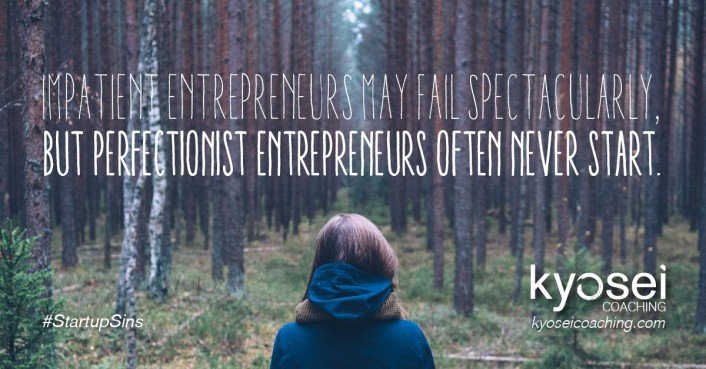Dogfooding is Key to Entrepreneurial Success
Perfectionism is a character trait that regularly stalls entrepreneurial success. No matter how great your idea, how much planning and research you do, and how smart you are growing a business from startup to success is fraught with trial and error. In their attempt to avoid mistakes, perfectionist entrepreneurs try to put off the trial part of this equation until they can ensure success. This mindset is counterproductive. Ask any successful entrepreneur and they will tell you that their success is the product of all of the mistakes they made – not of getting it right out of the gates.
One example of this was a client who wanted to transition from being employed as an expert in his field to being a speaker in a completely different one that was more in alignment with his passions. He refused to settle on an idea until he could prove that his niche was financially viable. He’d pore over market research and financials. He’d stall and stall. He had a pretty good idea he could make it, but he needed to know for sure. We ultimately helped him to understand that the best way to clarify his niche and break into speaking and training was to go out and get engagements (even cheap or free engagements) to perfect his content. Once he got out there and started delivering his content, as imperfect as it was in his eyes, he got the much needed feedback from his audience on what they really wanted and needed that allowed him to focus his niche. If he hadn’t stepped out and started delivering, he could have stayed locked in an endless cycle of research, tweaking and doubt. The end result of this would have likely seen him giving up on his business dreams altogether and returning to his day job.
This perfectionism is typical of people with business degrees and business backgrounds, who know the “right way” to do things. These entrepreneurs feel the need to optimize every detail before jumping in. This process is time-consuming and potentially wasteful. It might take 10 hours to get a new product or service to the point where you can start selling it and 200 to be ready to actually deliver on your promise. Obviously you can’t sell something without knowing that you can deliver what you promise, but in the early stages of a business the product development and sales aspects of your business need to work in tandem or you will run out of time and money before your business gets of the ground. In addition, even the most prepared entrepreneurs can’t anticipate every eventuality. The only way to know for sure if something is going to fly is to throw it in the air.
There is an alternative, though, and we swear by it. That alternative is to “dogfood” your processes. (Dogfooding is short for “eating your own dog food” which refers to the practice of using your own products.) At Kyosei, we constantly implement new tactics and systems and regularly evaluate what’s working and what’s not working, while we work. We find that it’s the best way to know if something is going to work in your particular situation. Of course, such a process plays a double role in a coaching and consulting company because we’re able to suggest systems that we’ve tried to clients. Popularized by Silicon Valley software companies, dogfooding is now considered a common best practice. If you unleash your product on yourself and try to use it, you will soon discover all of the ways that it annoys you. Isn’t it better to work out the frustrations internally than to unleash them on potential customers?
Strangely, your current customers might be happy to participate in your frustrations and eat a bit of your dog food as well. If you are constantly developing new products or improving existing ones based on the feedback of customers and needs you see in your target market, your current clients will often welcome the opportunity to give feedback on a new product so that it can be improved to work the way they want it to. Contrary to what you might think, letting your customers see your mistakes by allowing them experience and give feedback on your prototype before it is perfected stands a good chance of getting them more excited to buy it because they feel invested in the development process.
What this looks like internally is having a willingness to adopt systems and processes before spending too much time evaluating them. It turns your whole business into a lab and each day into an experiment, but you’ll likely be pleasantly surprised by the results. Even when a process or system is a failure, the results are often better than doing nothing at all (as perfectionist entrepreneurs always risk). And when your new systems succeed, you’re already well on your way to implementing them. It’s relatively cheap and quick for early stage businesses to change tactics, software etc., and, again, always better than wallowing in a quagmire of indecision. (Hamlet would have been a terrible entrepreneur.)

To read more about how to avoid dangerous mindsets and build a successful startup, check out our ebook The Seven Sins of a Startup, available for download here.

